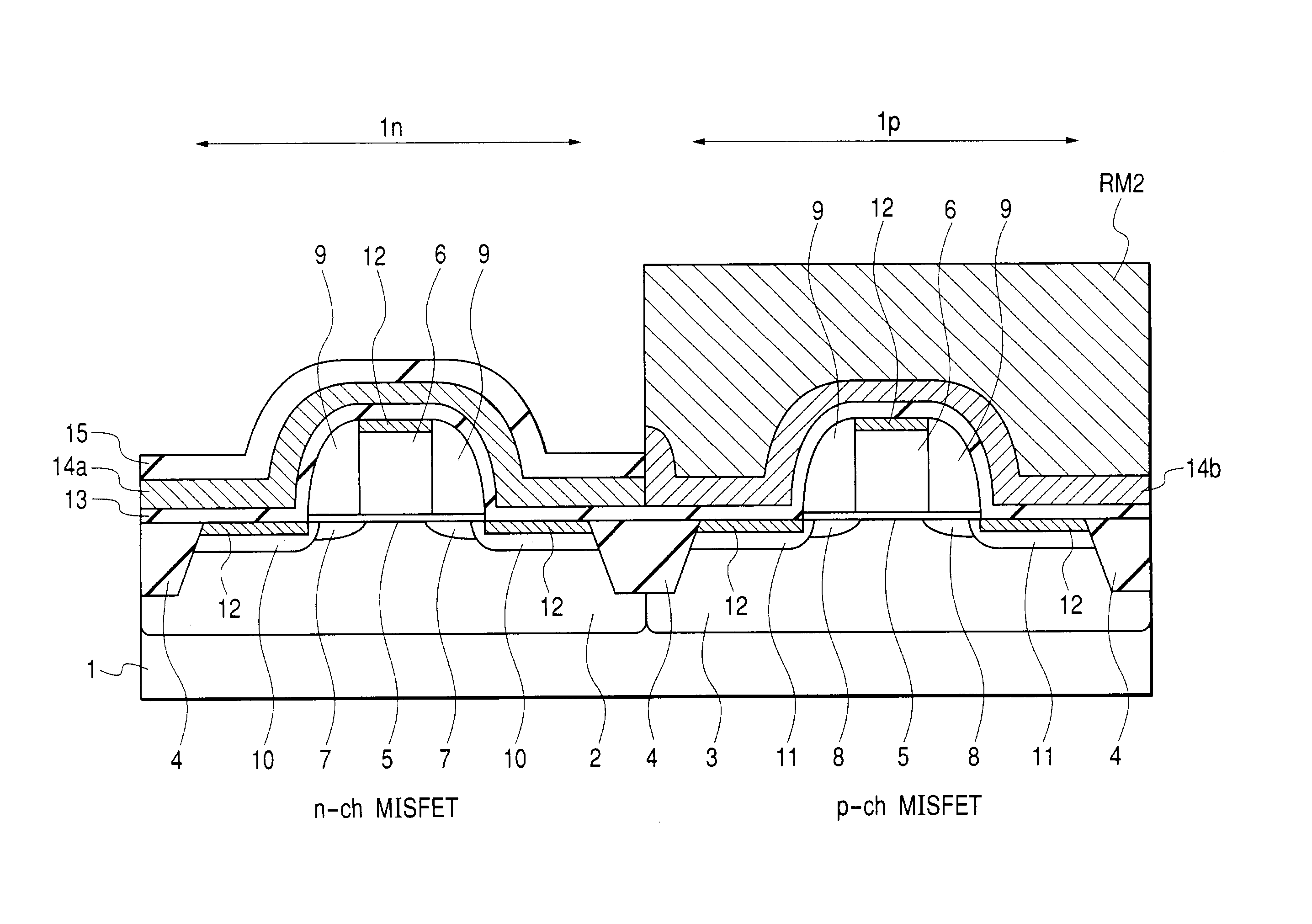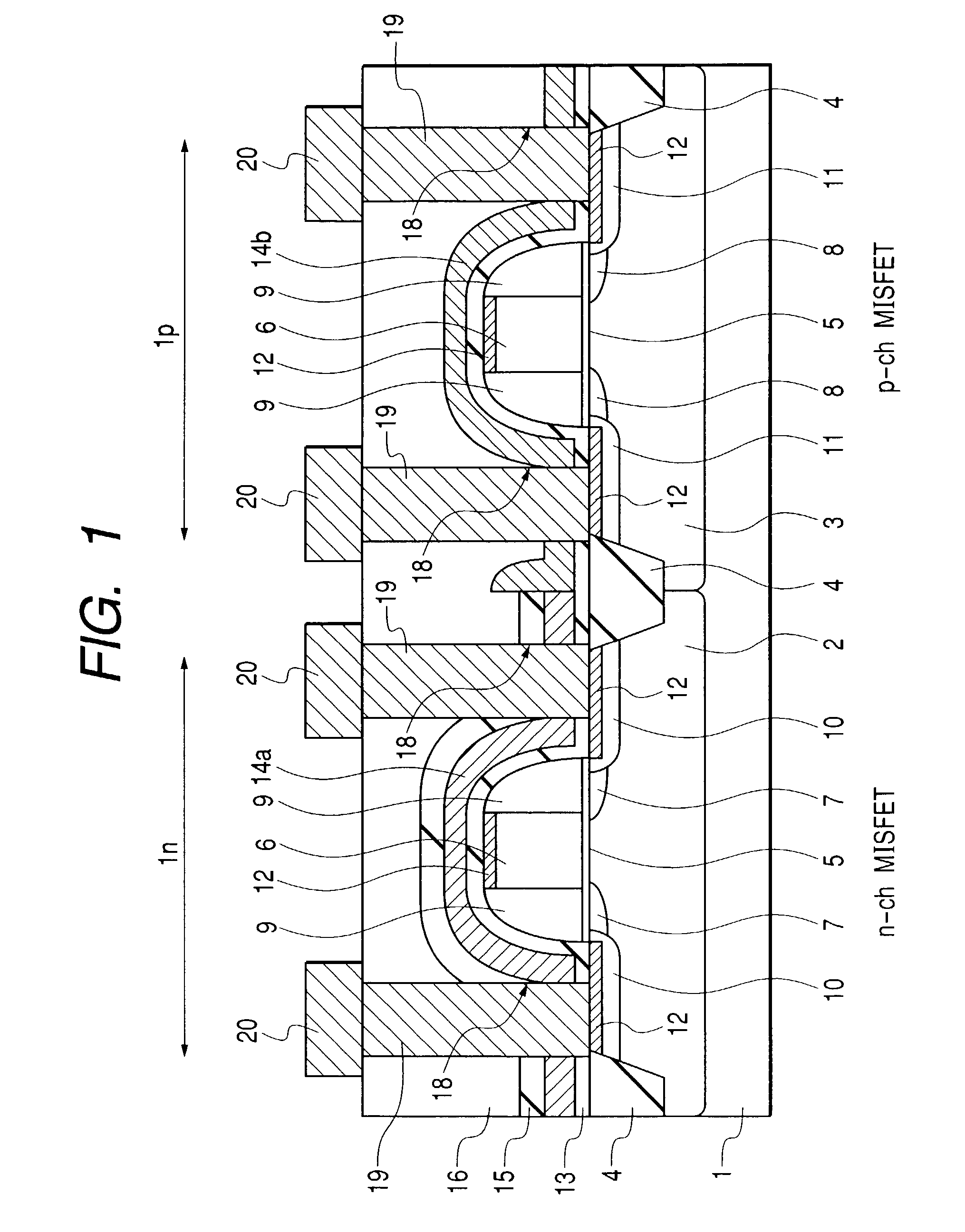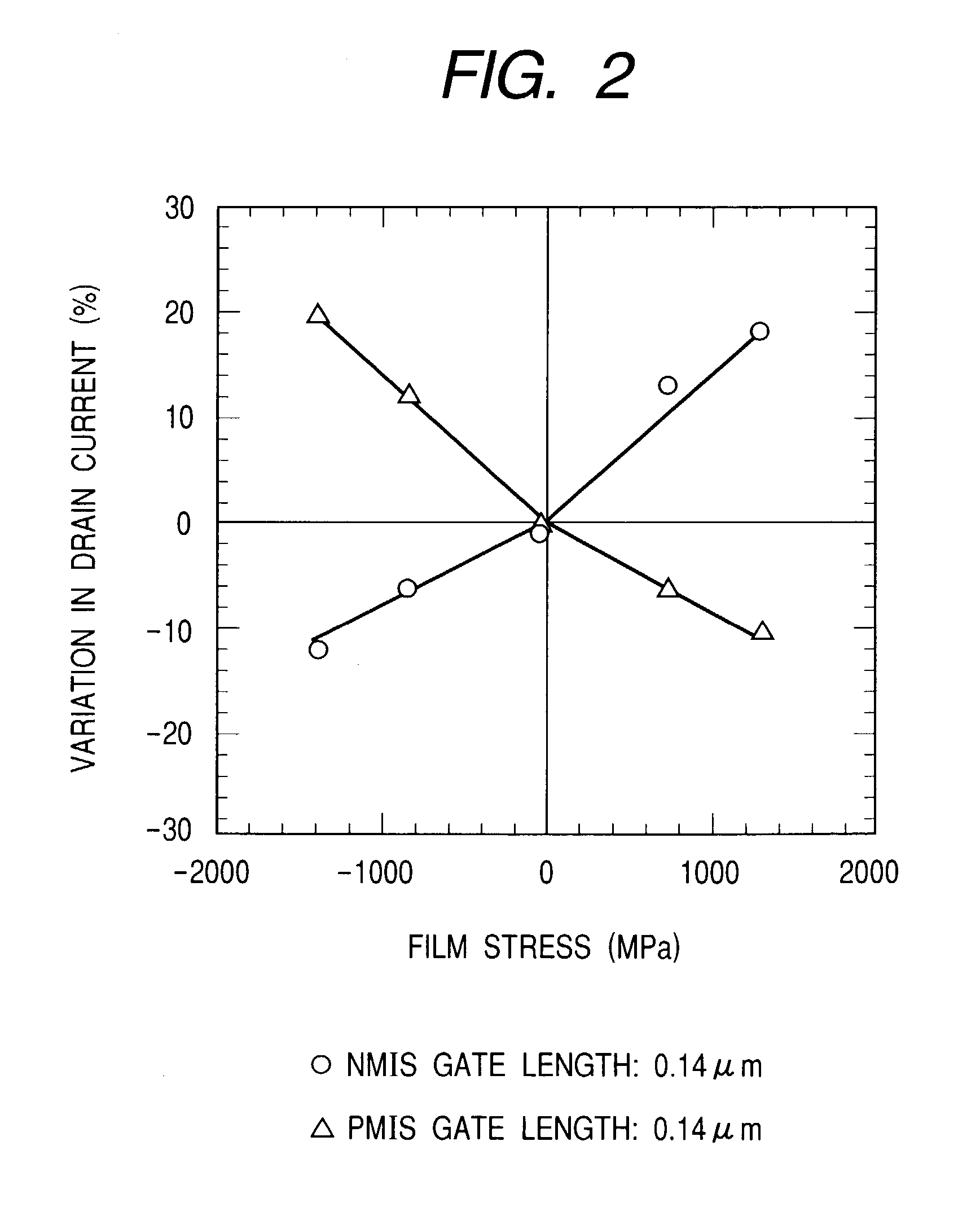Semiconductor device and a method of manufacturing the same
a technology of semiconductor devices and semiconductors, applied in the direction of semiconductor devices, electrical devices, transistors, etc., can solve problems such as process-induced residual stress in elements, and achieve the effect of suppressing the effect of short channel effects
- Summary
- Abstract
- Description
- Claims
- Application Information
AI Technical Summary
Benefits of technology
Problems solved by technology
Method used
Image
Examples
embodiment 1
[0155]In Embodiment 1, application of the present invention to a semiconductor device having a complementary MISFET structure and having a power-supply voltage of from 1 to 1.5V and a gate length of from 0.1 to 0.14 μm will be described.
[0156]In FIG. 1 and FIGS. 5 to 19, an n channel conductivity type MISFET (n-type MISFET) is illustrated on the left side, while a p channel conductivity type MISFET (p-type MISFET) is illustrated on the right side.
[0157]As illustrated in FIG. 1, the semiconductor device according to this Embodiment has a semiconductor substrate composed mainly of a p type silicon substrate (which will hereinafter simply be called a “p type substrate”) made of, for example, single crystal silicon. The circuit formation surface (one main surface) of the p type substrate 1 has thereon an nMIS formation region (first element formation region) 1n and a pMIS formation region (second element formation region) 1p, and the nMIS formation region 1n is separated from the pMIS f...
embodiment 2
[0234]FIG. 25 is a schematic cross-sectional view illustrating the rough constitution of a semiconductor device according to Embodiment 2 of the present invention.
[0235]FIGS. 26A, 26B and 27 are each a schematic cross-sectional view of the semiconductor device, at a manufacturing step thereof, according to Embodiment 2 of the present invention. In FIGS. 25 to 27, an n-type MISFET is illustrated on the lift side, while a p-type MISFET is illustrated on the right side.
[0236]As illustrated in FIG. 25, the semiconductor device of Embodiment 2 is similar to that of Embodiment 1 except that the insulating film 13 serving as an etching stopper is removed.
[0237]When the insulating film 13 is left as in Embodiment 1 (refer to FIG. 18), the stress of the silicon nitride films (14a, 14b) concentrates on the foot of the step portion 35a, that is defined by the gate electrode 6, sidewall spacers 9 and insulating film 13, and the starting point of the stress of the silicon nitride films (14a, 14b...
embodiment 3
[0243]FIG. 28 is a schematic cross-sectional view of a semiconductor device, at a manufacturing step thereof, according to Embodiment 3 of the present invention. In FIG. 28, the left side illustrates an n-type MISFET, while the right side illustrates a p-type MISFET.
[0244]In Embodiment 1, the insulating film 13 made of a silicon oxide film formed by the deposition method was used as an etching stopper upon removal of the silicon nitride film 14a. In Embodiment 3, on the other hand, an insulating film 21, made of a silicon oxide film formed by the thermal oxidation method, is used as an etching stopper upon removal of the silicon nitride film 14a. The formation of the insulating film 21 by the thermal oxidation method is conducted after the step of forming the n-type and p-type MISFETs having a salicide structure, but before the step of forming the silicon nitride films 14a, 14b.
[0245]By the thermal oxidation method, the insulating film 21 can be formed selectively so as to cover th...
PUM
 Login to View More
Login to View More Abstract
Description
Claims
Application Information
 Login to View More
Login to View More - R&D
- Intellectual Property
- Life Sciences
- Materials
- Tech Scout
- Unparalleled Data Quality
- Higher Quality Content
- 60% Fewer Hallucinations
Browse by: Latest US Patents, China's latest patents, Technical Efficacy Thesaurus, Application Domain, Technology Topic, Popular Technical Reports.
© 2025 PatSnap. All rights reserved.Legal|Privacy policy|Modern Slavery Act Transparency Statement|Sitemap|About US| Contact US: help@patsnap.com



